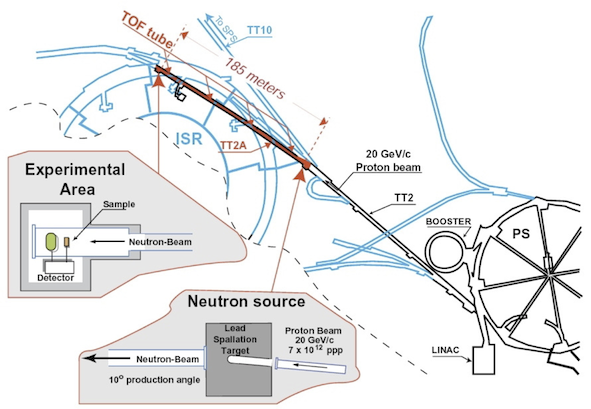Facility Description

Neutrons are generated using a pulsed beam of protons with a momentum of 20 GeV/c, hitting a lead spallation target. The proton pulses delivered by CERN's PS accelerator have a width of 6 ns RMS and the time between two subsequent pulses is a multiple of 1.2 s.
Every proton yields about 300 neutrons. The initially fast neutron spectrum is slowed down, first by the lead target, and then by a water slab in front of the lead target. This creates a wide neutron spectrum, spanning an energy range from the meV region up to the GeV region.
Neutrons are collimated and guided through an evacuated beam pipe to an experimental area at a distance of 185 m from the spallation target. In a typical experiment, a sample is placed in the neutron beam, and the reaction products are detected with dedicated detectors. This allows to reconstruct the reaction probability as a function of the incident neutron energy.
Only a few time-of-flight facilities exist world-wide, each with its own characteristics. The strength of the n_TOF facility is the large energy range that can be covered in a single experiment, and the high number of neutrons in a single pulse.